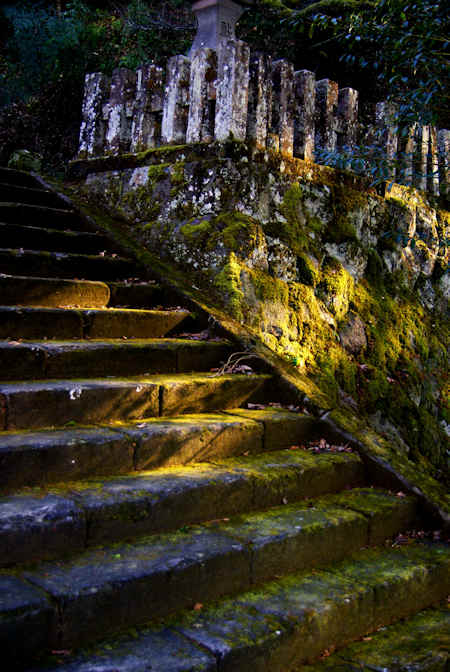Saturday, March 26th, 2016, and I continue north on day 7 of my walk along the Saigoku Kannon Pilgrimage which at this point still follows the Kumano Kodo, the World Heritage registered pilgrimage routes.
I am following the Kiiji Route of the Kumano Kodo which ran from the imperial capital in Kyoto down to the Kumano Shrines. For the previous two days since I left Tanabe where the Nakahechi Route heads into the mountains The Kiiji route has followed the coast.
Now it heads inland and over the mountains on what was historically considered a difficult part of the route.
Heading north the narrow road passes several monuments to sites of former Oji, the 99 shrines that lay upon the route.
Some are still existant as shrines, and of course there are numerous roadside statues.
The route is pretty well marked and I believe the signage has gotten even more prolific since I walked it 8 years ago.
There are numerous artworks along the way depicting pilgrims, usual high-class, on the route in historical times.
The site of Kutsukake Oji, the 50th Oji, marks a kind of halfway point on the pilgrimage route.
As the road steepens the trail heads off along a section of cobblestone road. Apparently this is the longest section of the old paved route still in existence.
Eventually the trail levels out at Shishigasstoge, the pass at about 350 meters above sea level.
During the Edo Period there was a teahouse for travellers at the pass, and also other teahouses along the way. All have disappeared, mostly the the Meiji Period when trains and modern roads led to the old paths becoming hardly used.
The plum blossoms were particularly appealing as they were in full bloom at this altitude.
Downhill from here is quite steep but mostly on a narrow asphalt or concrete road.
While not as dramatic as the far more popular Kumano Kodo routes to the south, this section is easily accessible for a shorter walk along the Kumano Kodo without necessitating much planning and expense.































































